Advertisements
Advertisements
प्रश्न
Complete the hexagonal and star shaped rangolies (see the given figures) by filling them with as many equilateral triangles of side 1 cm as you can. Count the number of triangles in each case. Which has more triangles?
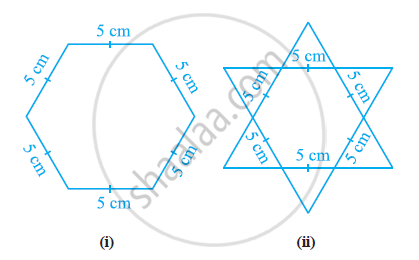
उत्तर
It can be observed that hexagonal-shaped rangoli has 6 equilateral triangles in it.
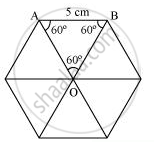
`"Area of "ΔOAB = sqrt3/4"(side)"^2`
`= sqrt3/4(5)^2`
`= sqrt3/4(25)`
`= (25sqrt3)/4cm^2`
`"Area of hexagonal-shaped rangoli "=6xx(25sqrt3)/4=(75sqrt3)/2cm^2`
`"Area of equilateral triangle having its side as 1cm "=sqrt3/4(1)^2=sqrt3/4cm^2`
`"Number of equilateral triangles of 1 cm side that can be filled in this hexagonal-shaped rangoli "=((75sqrt3)/2)/(sqrt3/4)=150`
Star-shaped rangoli has 12 equilateral triangles of side 5 cm in it.
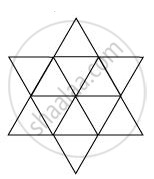
`"Area of star-shaped rangoli "=12xxsqrt3/4xx(5)^2=75sqrt3`
`"Number of equilateral triangles of 1 cm side that can be filled in this star-shaped rangoli "=(75sqrt3)/(sqrt3/4)=300`
Therefore, star-shaped rangoli has more equilateral triangles in it.
APPEARS IN
संबंधित प्रश्न
In the given figure, ∠B < ∠A and ∠C < ∠D. Show that AD < BC.

Show that of all line segments drawn from a given point not on it, the perpendicular line segment is the shortest.
In the following figure, write BC, AC, and CD in ascending order of their lengths.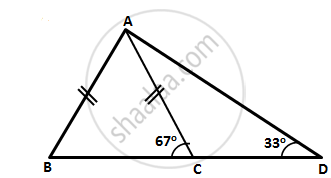
D is a point in side BC of triangle ABC. If AD > AC, show that AB > AC.
"Caste inequalities are still prevalent in India." Examine the statement.
Name the smallest angle in each of these triangles:
In ΔPQR, PQ = 8.3cm, QR = 5.4cm and PR = 7.2cm
In the given figure, ∠QPR = 50° and ∠PQR = 60°. Show that : PN < RN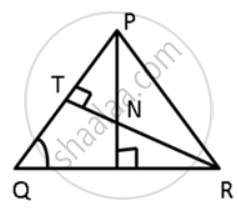
In ΔPQR, PS ⊥ QR ; prove that: PQ > QS and PR > PS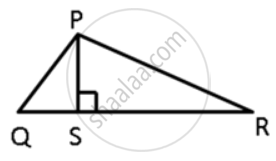
In the given figure, T is a point on the side PR of an equilateral triangle PQR. Show that RT < QT
Prove that in an isosceles triangle any of its equal sides is greater than the straight line joining the vertex to any point on the base of the triangle.
